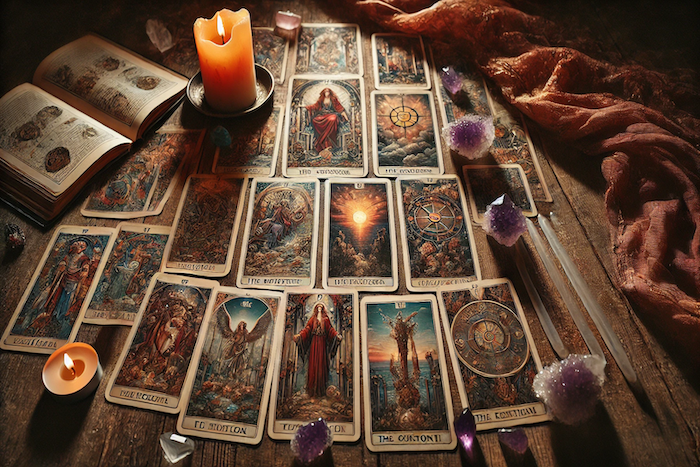Tarot cards have captivated seekers of wisdom for centuries.
Far more than just a deck of playing cards, with their vivid imagery and deep symbolism, the Tarot has long served as a powerful tool for divination and self-reflection. Originating in the 15th century as a card game in Europe, the Tarot’s purpose evolved, transitioning from a pastime to a mystical practice that unlocks secrets of the past, present, and future. This exploration delves into the rich history of the Tarot, tracing its journey from a simple card game to a profound medium for understanding life’s mysteries.
The Tarot likely emerged in Italy, with the most well-known historical decks being the Tarot de Marseille and the Visconti-Sforza.
Initially used for entertainment, the intricate designs and symbols on the cards began to draw the attention of mystics and occultists. By the 18th century, Tarot had been embraced as a divinatory tool, thanks to figures like Jean-Baptiste Alliette (Etteilla) and Eliphas Levi, who associated the cards with ancient esoteric knowledge. Tarot readings involve the shuffling and drawing of cards, with each card holding a particular meaning based on its imagery and placement.
Over time, different interpretations of the Tarot developed, influenced by various traditions, from astrology to numerology and Kabbalah.
The power of Tarot lies in its ability to open doorways to both the conscious and unconscious mind. Each card offers a mirror to life’s experiences, emotions, and challenges. In divination, Tarot cards do not predict a fixed future but instead offer guidance and clarity, helping individuals reflect on their circumstances, understand patterns, and make empowered decisions. Today, the most recognized deck is the Rider-Waite-Smith, created in the early 20th century and renowned for its rich symbolism and accessibility.

Whether seeking insights on relationships, career, or personal growth, Tarot has a way of unlocking deeper truths, acting as a bridge between the known and the unknown. Today, Tarot enjoys a global resurgence, with modern practitioners using traditional and modern decks to navigate life’s complexities and connect with the wisdom of the cards.
The enduring allure of Tarot lies in its ability to guide introspection and provide clarity in moments of uncertainty. Its rich, symbolic language speaks directly to the human experience, offering insight into life’s many twists and turns. From the ancient courts of Europe to modern-day seekers, the Tarot continues to resonate with those in search of understanding, balance, and illumination.
Tarot’s history is a testament to its enduring relevance as a tool for self-discovery and divination, bridging the gap between the spiritual and the everyday world.

































































